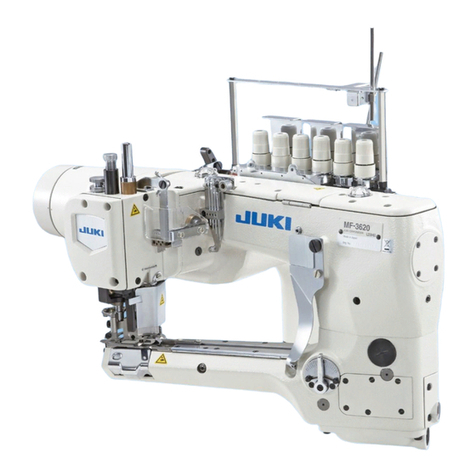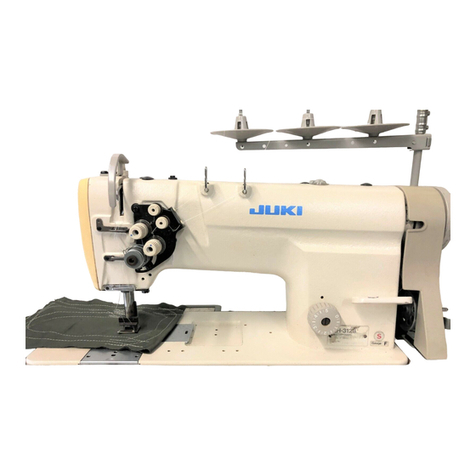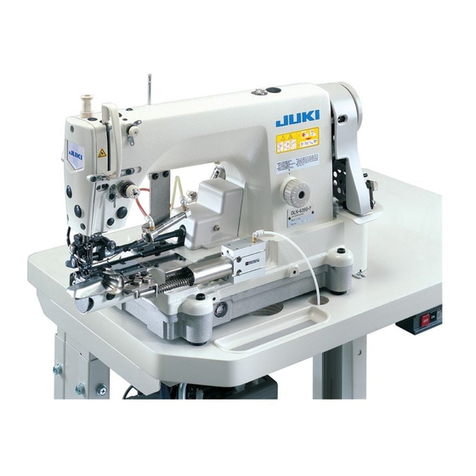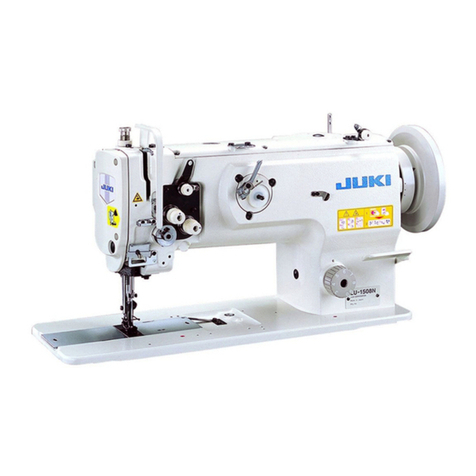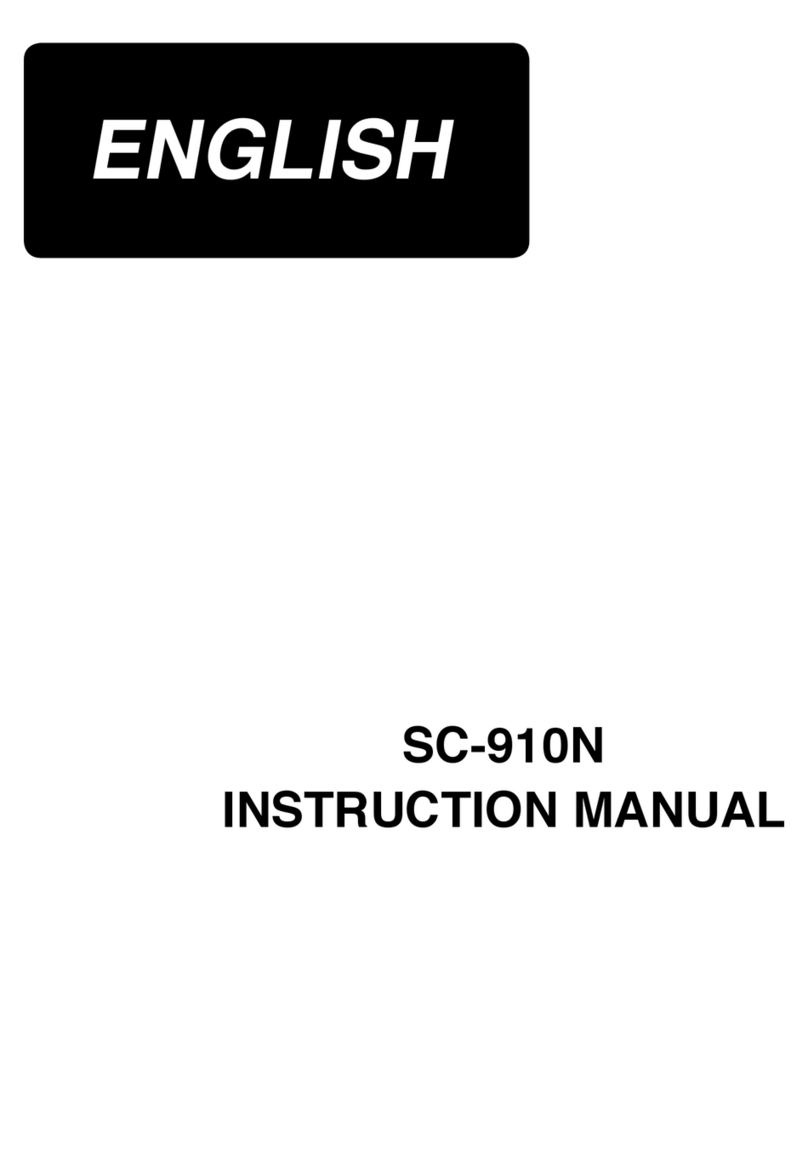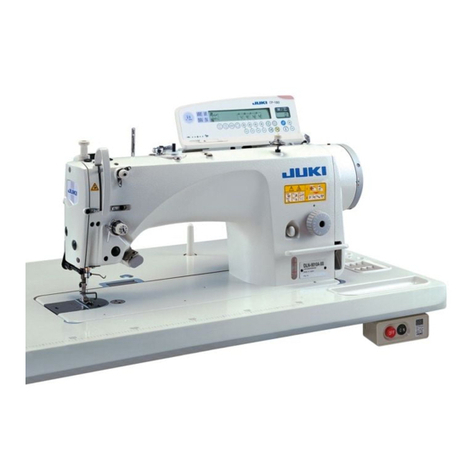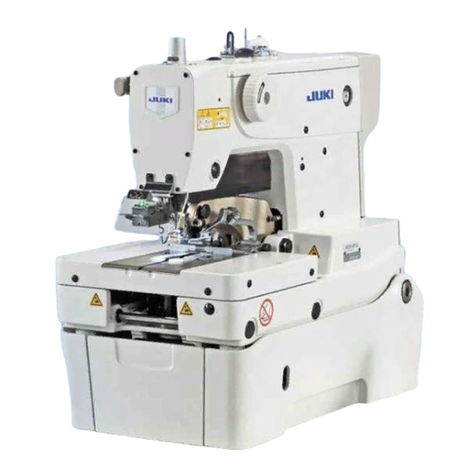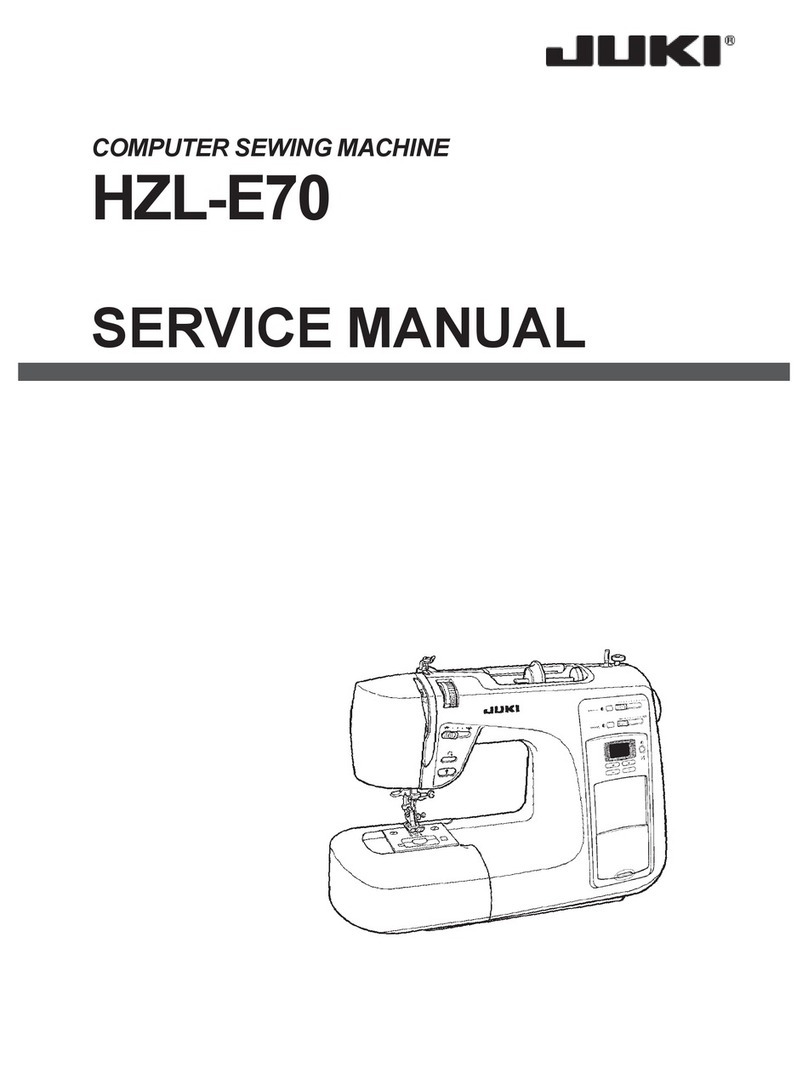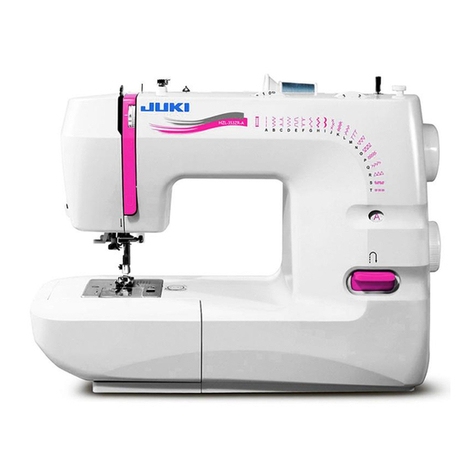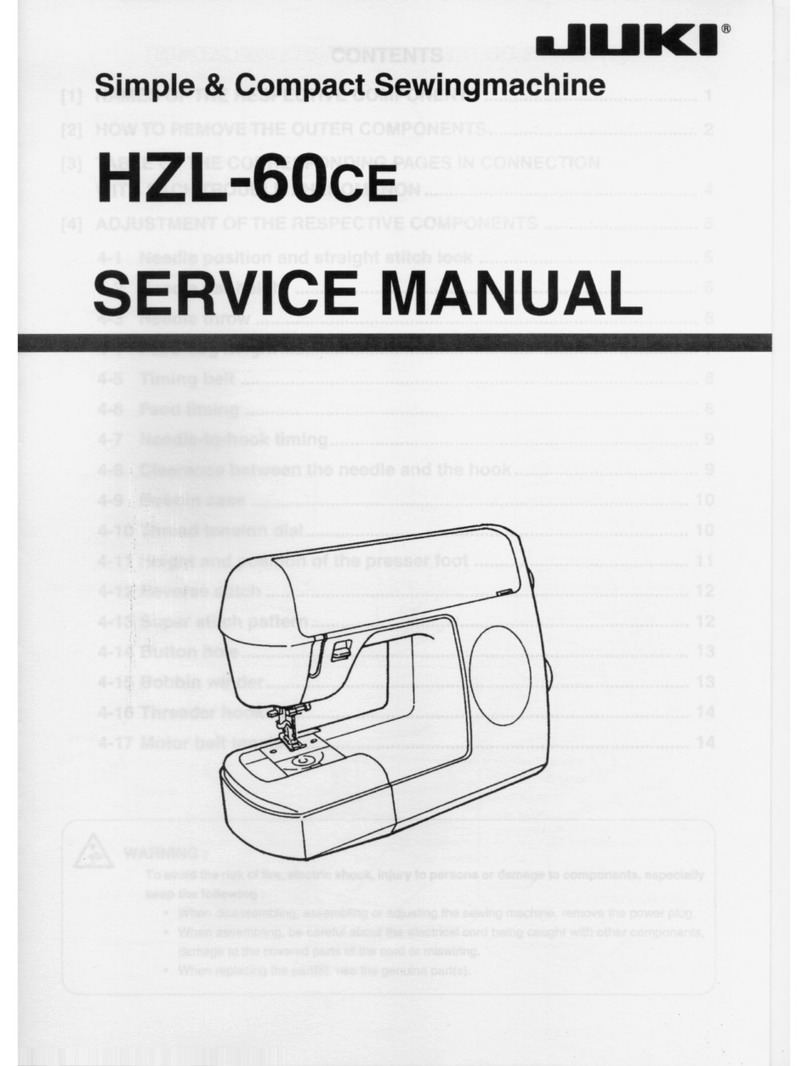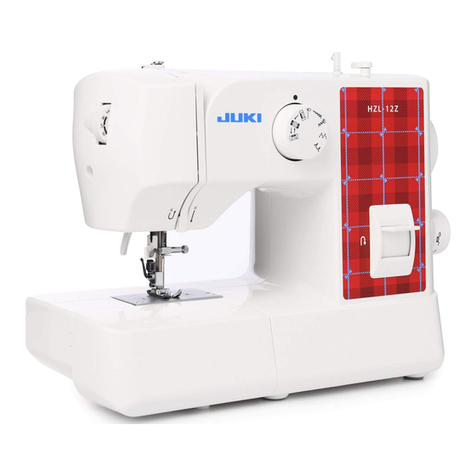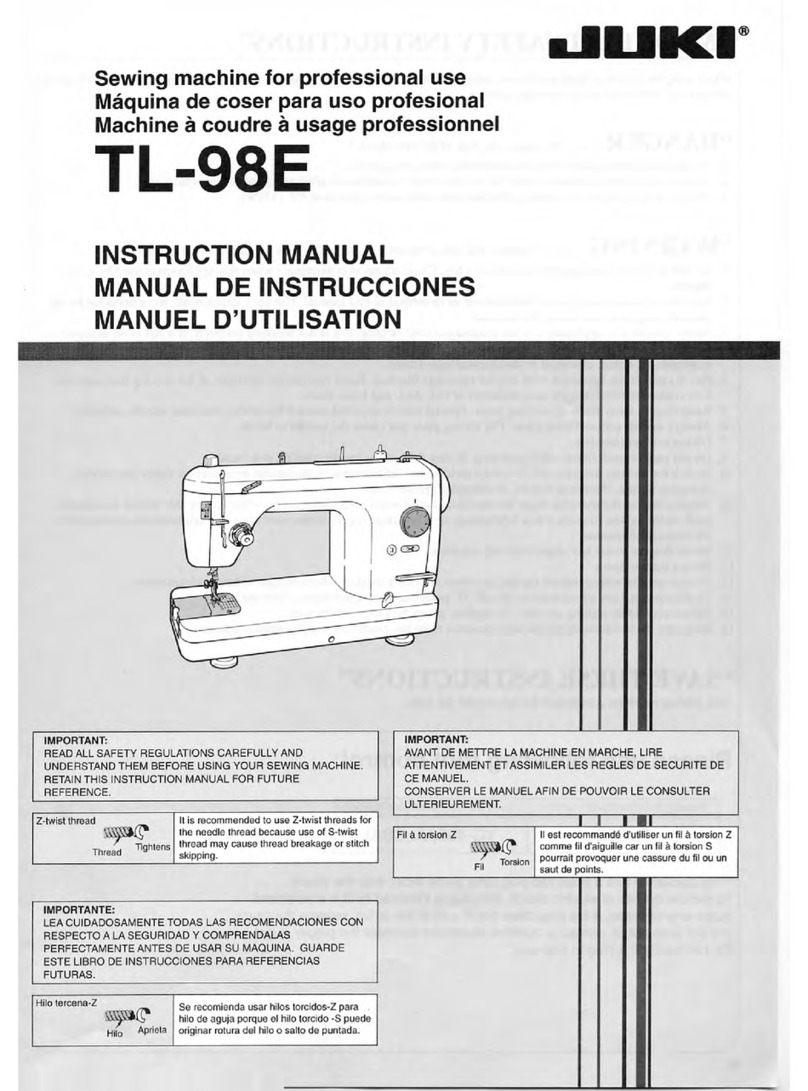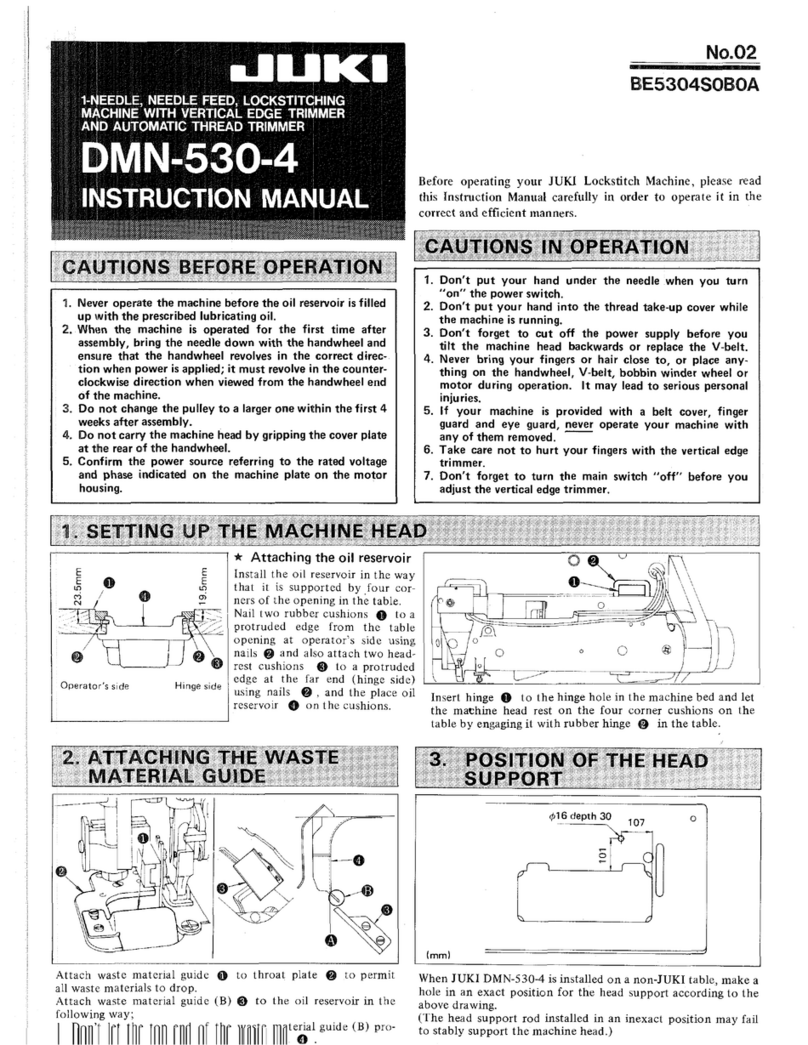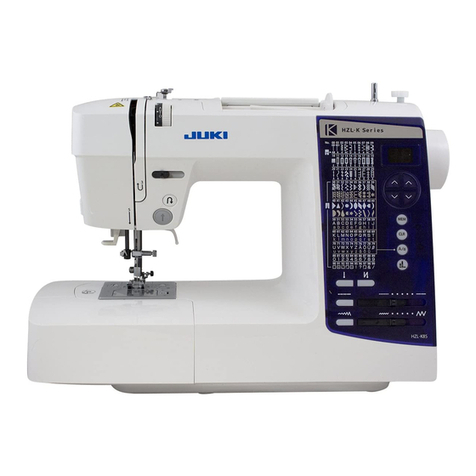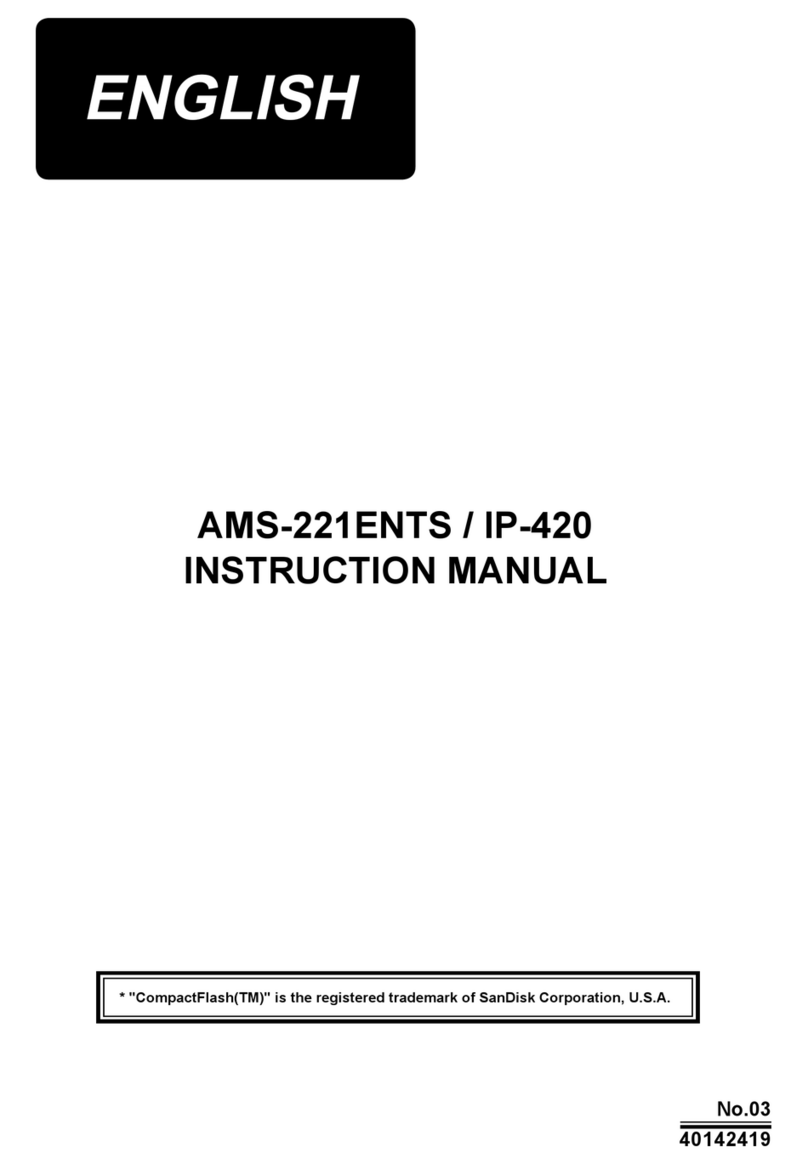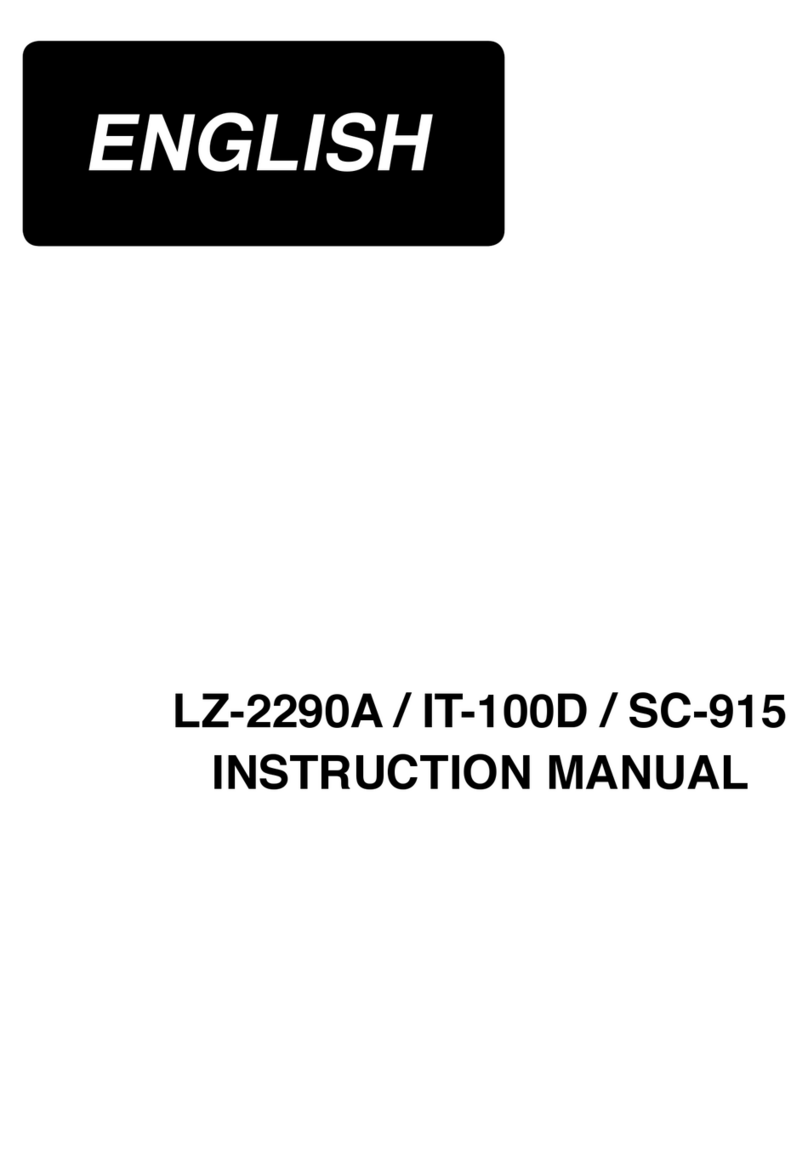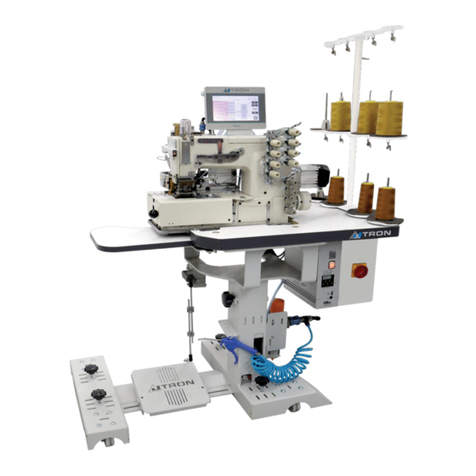
CONTENTS
1. SPECIFICATIONS ....................................................................................................................... 1
2. MOTOR AND BELT..................................................................................................................... 2
3. MODEL NUMBERING SYSTEM ................................................................................................. 3
4. STANDARD ADJUSTMENT ....................................................................................................... 7
(1) MF ............................................................................................................................................................................ 7
1) Timing relation between the needle and the feed .............................................................................................. 7
2) Adjusting the timing relation between the needle bar and looper (synchronization) : Without gauges ........................... 7
3) Returning amount of the looper ......................................................................................................................... 9
4) Height of the needle bar..................................................................................................................................... 9
5) Clearance between the looper and needle ...................................................................................................... 11
6) Adjusting amount of the looper-avoid .............................................................................................................. 11
7) Position of the needle guard ............................................................................................................................ 13
8) Position of the feed dog ................................................................................................................................... 15
9) Spreader .......................................................................................................................................................... 17
10) Looper thread cam ........................................................................................................................................... 19
11) Position of the presser bar ............................................................................................................................... 21
12) Position of the needle thread tension release (without thread trimmer)........................................................... 21
13) Position and height of the presser foot ............................................................................................................ 23
14) Position of the thread guide ............................................................................................................................. 23
(2) Thread trimmer device (MF) ................................................................................................................................ 27
1) Adjustment of the thread trimmer device ......................................................................................................... 27
2) Thread tension release (Looper thread trimmer device) .................................................................................. 29
(3) MFC ....................................................................................................................................................................... 31
1) Timing relation between the needle and the feed ............................................................................................ 31
2) Adjusting the timing of the needle bar and looper (Synchronization) : Without gauges................................... 31
3) Returning amount of the looper ....................................................................................................................... 33
4) Height of the needle bar................................................................................................................................... 33
5) Position of the needle guard ............................................................................................................................ 35
6) Clearance between the looper and needle ...................................................................................................... 35
7) Adjusting amount of the looper-avoid .............................................................................................................. 37
8) Position of the feed dog ................................................................................................................................... 39
9) Spreader .......................................................................................................................................................... 41
10) Looper thread cam ........................................................................................................................................... 43
11) Looper thread wrap-up preventing cam (Old type) .......................................................................................... 43
12) Position of the presser bar ............................................................................................................................... 45
13) Position of the needle thread tension release (without thread trimmer)........................................................... 45
14) Position and height of the presser foot ............................................................................................................ 47
15) Position of the thread guide ............................................................................................................................. 47
(4) Thread trimmer device (MFC) ............................................................................................................................. 51
1) Stroke adjustment (common to both elctromagnetic and pneumatic type) ...................................................... 51
2) Adjustment of the right position of movable knife (return)................................................................................ 51
3) Adjustment of stationary knife and looper thread clamp spring ....................................................................... 53
4) Adjustment of the position of movable knife’s pointed end .............................................................................. 53
5) Adjustment of operating speed of thread trimmer (pneumatic type) ................................................................ 55
6) Confirmation of thread trimming....................................................................................................................... 55
7) Adjustment of pneumatic lifter.......................................................................................................................... 57
8) Adjustment of tension release (equipped with thread trimmer)........................................................................ 59
9) Adjustment of proximity switch......................................................................................................................... 59
10) Adjustment of top covering thread trimmer ...................................................................................................... 61
5. ASSEMBLING AND ADJUSTMENT OF FIXED CAM THREAD TAKE-UP ............................. 63
(1) Parts used............................................................................................................................................................. 63
(2) Needle bar cam plate and needle bar fork thread take-up ............................................................................... 65
(3) Needle thread guide and medium thread path base......................................................................................... 65
(4) Spreader thread guide ......................................................................................................................................... 67
1) Parts used ........................................................................................................................................................ 67
2) Assembling and adjustment of spreader thread guide..................................................................................... 67
6. OTHER PRECAUTIONS ........................................................................................................... 68
(1) Points to which Locktite is applied .................................................................................................................... 68
7. TROUBLES AND CORRECTIVE MEASURES......................................................................... 69
8. DRAWING OF TABLE............................................................................................................... 84
(1) Semi-submerged type for MF ............................................................................................................................. 84
(2) Desktop type for MF ............................................................................................................................................ 86
(3) Desktop type for MF with fabric under trimmer ................................................................................................ 87
(4) Desktop type for MFC .......................................................................................................................................... 88
(5) Semi-submerged type for MFC ........................................................................................................................... 89
(6) Semi-submerged down table for MFC ............................................................................................................... 90
(7) Table for MFC with tension roller ....................................................................................................................... 91
From the library of: Diamond Needle Corp
